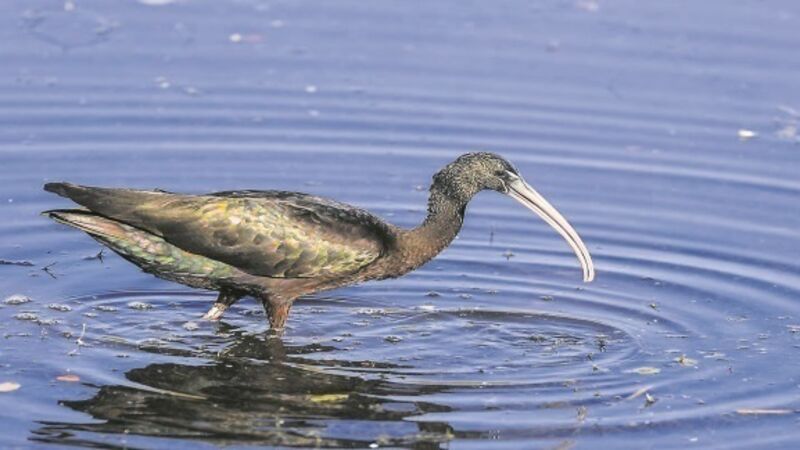Ibis gradually winging its way to Ireland

The egrets never looked back; they are in every coastal county now and in some inland ones as well.
In the current edition of Wings, BirdWatch Ireland’s magazine, Dick Coombes makes a similar, if more tentative, prediction about another wetland bird.
Is it ‘too fanciful to imagine that glossy ibises will someday set up a breeding colony in an Irish wetland’ he asks.
Ibises used to be rare vagrants to our shores but now they are frequent visitors. As global temperatures rise, could the ibis follow the egrets lead and settle here? Will history repeat itself?
Little egrets from Africa began visiting the South of France in the 1920’s and nested at the Camargue in 1931. Spreading northwards, they gradually became a familiar sight at wetlands throughout France. The colonisation of Britain began in 1996.
The glossy ibis story, so far, is rather similar to that of the egret. In 1997, they established a colony in Spain’s Coto Doñana National Park, the first 20th Century Western European one. A pair nested at the Frampton Marsh reserve, Lincolnshire, in 2014 but no young were raised.
The white plumaged egret, with gaudy yellow feet, is easy to recognise but the glossy ibis can be mistaken for a curlew.
Both birds are long-legged with downward curving bills and locate their prey mostly by touch. The two are not related.
Ibises are cousins of the spoonbills, storks and herons, whereas the curlew is a wader, one of the sandpiper family. Both species frequent similar marshy places but the curlew is smaller and its plumage is brown. The ibis is a dark brownish-purple. ‘Glossy’ refers to the greenish wing feathers, iridescent like those of a mallard’s head.
The name ‘ibis’ comes from ancient Egypt, the sacred ibis being an elegant white bird with a black head and neck. The Egyptians mourned the departure of the life-giving sun each evening.
The moon, they thought, was Thoth, scribe to the gods and mediator between good and evil. He provided reassurance during the hours of darkness. The ibis’ crescent-shaped bill resembled the new moon, so the bird came to represent Thoth.
Mummified sacred ibises were placed in graves with the deceased. The bird, alas, disappeared from Egypt in the 19th Century, although it still breeds in Iraq and sub-Saharan Africa.
The glossy, the most widely distributed of the ibis tribe, is an adventurer. During the 19th Century, it even crossed the Atlantic to South America, from where it spread northwards.
John James Audubon saw one in Florida in 1832. There are colonies along the eastern seaboard of the United States and in the Caribbean. Although it’s a carnivore, feeding mainly on creepy crawlies, this resourceful species confounded the experts; it was discovered eating rice in Cuba.
A hundred years ago, the glossy ibis was a rare visitor to Ireland, with only occasional sightings here. ‘Invasions’ sometimes occurred. One followed the very warm summer of 1818 and, according to Robert Ruttledge, ‘20 stayed for about 10 days in Co Wexford in October 1934’.
‘A remarkable number was seen or shot’ during the winter of 1945-6, he noted. From 1950 onwards, ibises have been more frequent visitors, with around 180 recorded since then. Britain and Ireland saw a major influx in April 2007.
In 2009, at least 38 visited Britain and 31 came to Ireland.
On January 2 last, 20 were reported at Tramore Back Strand with further records from Wexford to Cork. Colour ring sightings suggest that our visitors come from the Coto Doñana colony which is steadily expanding.
If you should come across what appears to be a big black curlew, look again; it could be a glossy ibis.
- Glossy visitors amaze and perplex. Dick Coombes. Wings, Spring 2016.










